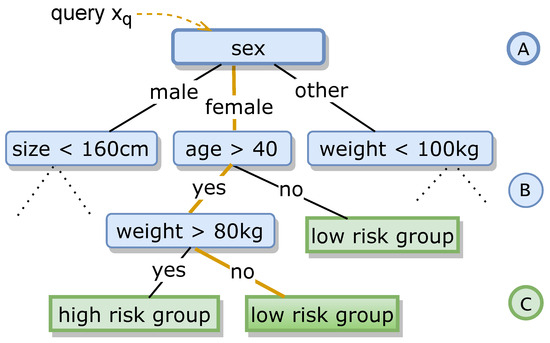These are all tree-based ensemble methods in machine learning. They combine multiple decision trees to create a more powerful predictive model. Let’s go step by step:
🌳 Decision Trees (the building block)
A decision tree splits data into groups based on feature thresholds (e.g., “Is age > 40?”).
They are:
- Easy to interpret
- Handle both numerical and categorical data
- But: prone to overfitting and instability (small changes in data can change the tree a lot).
Ensemble methods solve these issues by combining many trees.
1. Random Forests (RF)
- Type: Bagging ensemble of decision trees.
- How it works:
- Build many decision trees on bootstrapped (randomly resampled) subsets of the data.
- At each split, only a random subset of features is considered.
- Predictions are averaged (regression) or voted (classification).
- Strengths:
- Reduces variance (overfitting).
- Works well with minimal tuning.
- Robust to noise and outliers.
- Weaknesses:
- Large models, slower predictions than a single tree.
- Less interpretable.
Think of it as a committee of trees that vote independently.
2. Gradient Boosted Trees (GBT)
- Type: Boosting ensemble of decision trees.
- How it works:
- Trees are built sequentially.
- Each new tree tries to correct errors made by the previous trees, using gradient descent to minimize loss.
- Final prediction = weighted sum of all trees.
- Strengths:
- Usually more accurate than Random Forests.
- Can optimize arbitrary loss functions.
- Weaknesses:
- More sensitive to hyperparameters (learning rate, depth).
- Slower to train than Random Forests.
Think of it as a series of trees where each one fixes the mistakes of the last.
3. XGBoost (Extreme Gradient Boosting)
- An optimized implementation of gradient boosting.
- Key innovations:
- Second-order gradient optimization (uses both gradient and curvature).
- Regularization (helps prevent overfitting).
- Parallelization for speed.
- Often a go-to model in Kaggle competitions.
4. LightGBM (by Microsoft)
- Another optimized gradient boosting library.
- Key innovations:
- Leaf-wise tree growth (instead of level-wise) → deeper, more accurate splits.
- Histogram-based splits → faster and memory efficient.
- Handles very large datasets with high-dimensional features well.
- Typically faster than XGBoost on large datasets.
5. CatBoost (by Yandex)
- Gradient boosting with a focus on categorical features.
- Key innovations:
- Handles categorical variables natively (no need for one-hot encoding).
- Uses ordered boosting to reduce overfitting.
- Strong performance out-of-the-box with minimal tuning.
🔑 Summary Comparison
| Model | Type | Strengths | Best Use Cases |
|---|---|---|---|
| Random Forest | Bagging | Robust, simple, less tuning | General-purpose, baseline model |
| Gradient Boosting | Boosting | High accuracy, flexible loss | When accuracy matters most |
| XGBoost | GBT impl. | Regularization, fast, proven | Kaggle, tabular ML |
| LightGBM | GBT impl. | Very fast, large datasets | High-dimensional / big data |
| CatBoost | GBT impl. | Native categorical handling | Mixed data with categories |
👉 In practice:
- Start with Random Forest for a baseline.
- Try LightGBM/XGBoost/CatBoost if you want top performance on structured/tabular data.












